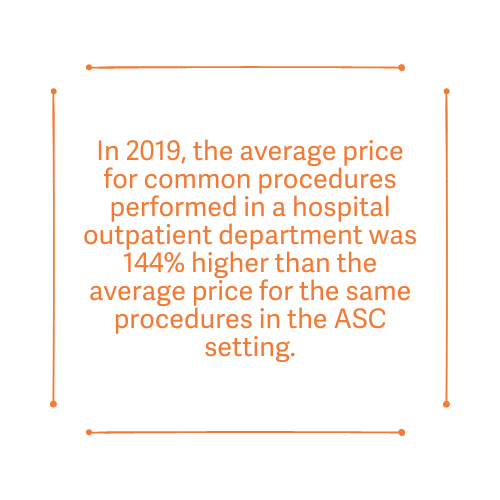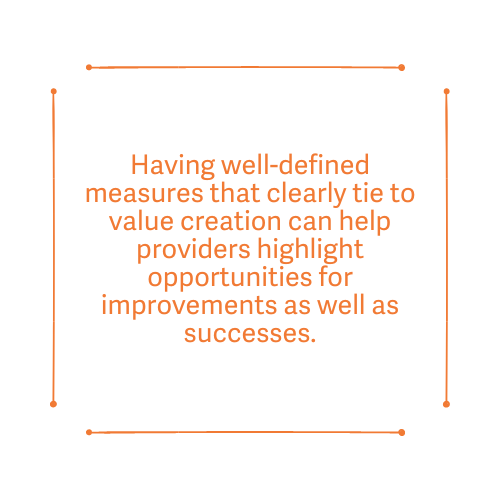
If you’ve participated in any managed care discussions recently, you’ve probably sensed a growing divide between payers and providers when it comes to the topic of price. Both sides are firmly entrenched in their opinion.
- Providers are experiencing significant cost increases.
- Payers are facing uncertainty stemming from COVID‑19.
Providers and payers need to shift the conversation away from price and toward shared incentives aligned around common interests and values. This is not to discount the importance of price to all parties, but rather to highlight opportunities to unlock value in your organization’s provider network.
Outlined below are five areas that present both near- and long-term opportunities for organizations to capture financial value in their provider networks.

1. Site of Service
Moving services and procedures out of the hospital and into the professional or ambulatory surgery center (ASC) setting can reduce costs for providers, patients, and payers without sacrificing quality. In 2019, the average price for common procedures performed in a hospital outpatient department was 144% higher than the average price for the same procedures in the ASC setting.[1]These lower-cost sites of service also provide a more intimate setting for patients to seek care.
As hospitals are still dealing with COVID‑19 and its repercussions on top of their normal patient load, transitioning appropriate services to outpatient settings can help lessen provider burden and increase patient access.
2. Emergency Department (ED) Avoidance
Unnecessary patient visits and high-cost resources (e.g., tests ordered, beds filled, provider utilization) make the ED an expensive setting for care. Your network and patients will see lower medical expenditures if ED visits can be avoided. There are several ways to reduce them:
- Identify patients who are at a higher risk of utilizing the ED.
- Educate patients on when it is appropriate to visit the ED
- Mitigate barriers to accessing nonemergent care.
- Collaborate with primary care physicians and other upstream care providers (e.g., behavioral health, urgent care).
Some of these steps may be time consuming and require planning, but they can alleviate pressure on the entire system and those who use it.
3. Risk Adjustment
Accurately documenting and coding patient diagnoses not only produces a better provider-patient interaction but also determines revenues for payers within certain lines of business, chiefly Medicare Advantage. There is variability across individual providers in terms of their ability to accurately document and diagnosis patients. As a result, there is significant value associated with having patients utilize providers who are more skilled in risk adjustment and improving processes and capabilities to educate and assist underperformers.

4. Quality
Quality care within a provider network seems like an obvious key to unlocking value, but analyzing and quantifying the outcomes of patients can be difficult. Having well-defined measures that clearly tie to value creation can help providers highlight opportunities for improvements as well as successes. Providers can differentiate themselves, share their successes with prospective patients, and build their reputation. Payers can utilize this information by adding select providers to preferred-provider lists, directing patients to providers who offer higher-quality care at lower costs.
5. Price Stabilization
The negotiated rate for services is the cornerstone of unlocking value for providers, payers, and patients.
- Providers need to be compensated appropriately to maintain a functioning practice and improve the quality of care where necessary.
- Payers need to have negotiated rates that align with member preferences and reflect the value of the services providers offer.
Providers and payers need to be able to work together to negotiate rates that reflect the value of the services offered. The accelerating subsidization of government programs by employers can’t continue and needs to be curbed with sustainable price movement. Where differentials in pricing exist for similar services, payers need to look to rationalize services across their network by providing information to providers and patients to facilitate the process.
Next Steps
Payers and other risk-bearing entities need to consider the following to unlock the value in their network:
- Investing in primary care and primary care enablement and member/patient engagement
- Establishing processes and developing internal capabilities that go beyond data transfer to support each value area
- Supporting network management by growing or seeking market expertise to work with provider entities and individual providers in your organization’s network

